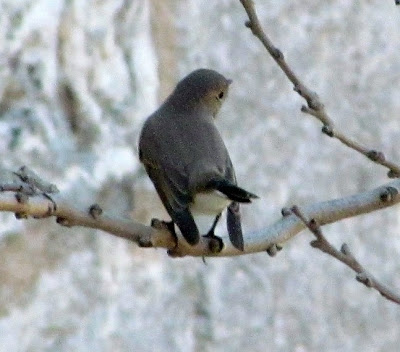By a great coincidence, some weeks ago, my sister and niece had booked a holiday in Istanbul. So we were able to meet up a few times.
On Wednesday, we visited the Topkapi together which I had last visited about 10 years ago.
Hagia Sohhia, Istanbul last week
Istanbul is in the middle of a heatwave very similar to Varna. The summer along the western Black sea coast is showing no sign of ending. Walking around old buildings is a hot affair but many hundreds were in the Topkapi alongside us.
the middle gate to the Topkapi
We toured the treasury (full of gifts and possessions of the sultans' family) and other pavilions.
At the end of the viewing, I could n't avoid the temptation to get my camera out for 5 minutes spontaneous birding. It really was only 5 minutes and I also didn't have any binoculars. I have named this "speed birding".
I have a hunch that the Topkapi would make a superb place for "proper" bird watching . The grounds are wooded and surrounded on two sides by water - the sea of Marmora and the Golden Horn. It's slap bang in the middle of the fly route which makes the shortest crossing of sea between Europe and Asia. Many thousands if not millions of birds funnel into this area and fly through during the passage. Some must stop over.
However there is one slight problem for bird watchers. Most of the grounds (and nearly all the wooded area) are out of bounds for tourists and birders. We can only glimpse and imagine what there is.
a bedraggled looking hooded crow in the Topkapi close to the ticket office
Almost all the tourists must notice the resident hooded crow. They are very tame and will walk close without flinching.
probable young yellow legged gull
As I only snatched 5 minutes of birding time, I didn't manage to identify all the birds as I went along. at the time, I though the gull was a yellow legged gull. And on return to my computer and books I am sticking with this view although I think the legs are too green and light for an adult bird. I think it could be a 3 year old. I would have gone for common gull but the eyes aren't dark so I'm sticking with the opinion I had at the time.
laughing dove in the Topkapi
There were no such identification problems with the other large bird present. Istanbul was the first place in Europe outside the Caucasus where the laughing dove has expanded into. The Topkapi grounds clearly have many of them these days.
house sparrow
Of the smaller birds, of course house sparrow is present. The one above looks to be a first year male who is just beginning to develop his black bib.
red breasted fly catcher
However it the sighting of a red breasted flycatcher which pleased me most in the five minutes of birding. This is almost certainly a passage bird and is a marker for all the other passage birds which were probably present in the Topkapi at the same time. It gave quite a display as its chosen tree to return to after fly catching was leafless.
red backed shrike
The final bird featuring in my "speed" birding was a young red backed shrike. I had trouble identifying the shrike because it kept in the dark on more sheltered branches than a typical bird. Indeed it flew off into a bush rather than perch on the side of it. In fact this type of behaviour is more typical of a masked shrike. I would dearly have loved it to have been one too. However in the end I have concluded its lack of any white flash on the wing and the strong vermiculation classify it as red backed. My guess is it was just shy of the very larger number of people close-by. This would also mark it out as a passage bird. If it had been there all summer I'm sure it would have been tamer.
My next birding reports should be fromn Saudi Arabia. How easy the birding is will be known soon!









No comments:
Post a Comment